Opening like a pop-up book from the banks of the Rio Douro, Porto blends edgy charm with opulent style, captivating visitors with its historic center and sumptuous food and wine.
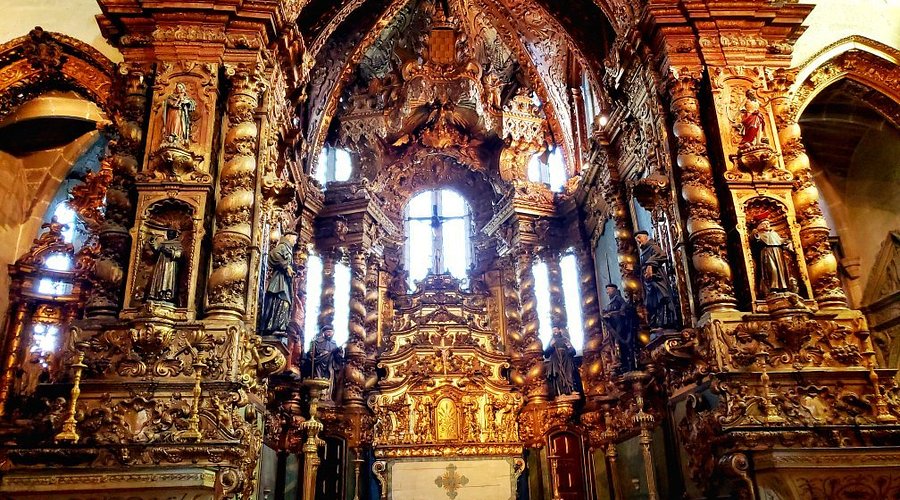
Igreja de São Francisco
From the outside, Igreja de São Francisco appears as an austere Gothic church, but inside it reveals one of Portugal’s most dazzling displays of Baroque extravagance. Nearly every surface is covered in intricate carvings, with otherworldly cherubs and solemn monks almost hidden beneath nearly 100 kilograms of gold leaf. If you visit only one church in Porto, this should be it.
The highlight is the nave, richly decorated with twisting vines and swirling curlicues, dripping with cherubs and shimmering gold. Among its many treasures are the Manueline-style Chapel of St John the Baptist, a 13th-century statue of St Francis of Assisi, and the stunning 18th-century Tree of Jesse—a polychrome altarpiece marvel. The church museum holds a carefully curated collection of sacred art.
Beneath the church, the atmospheric catacombs once served as the burial place for Porto’s elite. Keep an eye out for sculptural works by the Italian master Nicolau Nasoni and the prolific Portuguese sculptor António Teixeira Lopes.

This fabulous cultural institution combines a museum, a mansion, and extensive gardens. Cutting-edge exhibitions and a fine permanent collection featuring works from the late 1960s to the present are housed in the Museu de Arte Contemporânea, an arrestingly minimalist whitewashed space designed by renowned Porto architect Álvaro Siza Vieira. The charming pink Casa de Serralves, a prime example of Art Deco architecture, bears the signature of French architect Charles Siclis. One ticket grants access to both museums.
These museums are set within the magnificent 18-hectare Parque de Serralves. Lily ponds, rose gardens, formal fountains, and whimsical touches—such as a bright-red sculpture of oversized pruning shears—create a bucolic retreat within the city. The estate lies 6 km west of the city center; take bus 201 from Praça Dom João I, located one block east of Avenida dos Aliados.
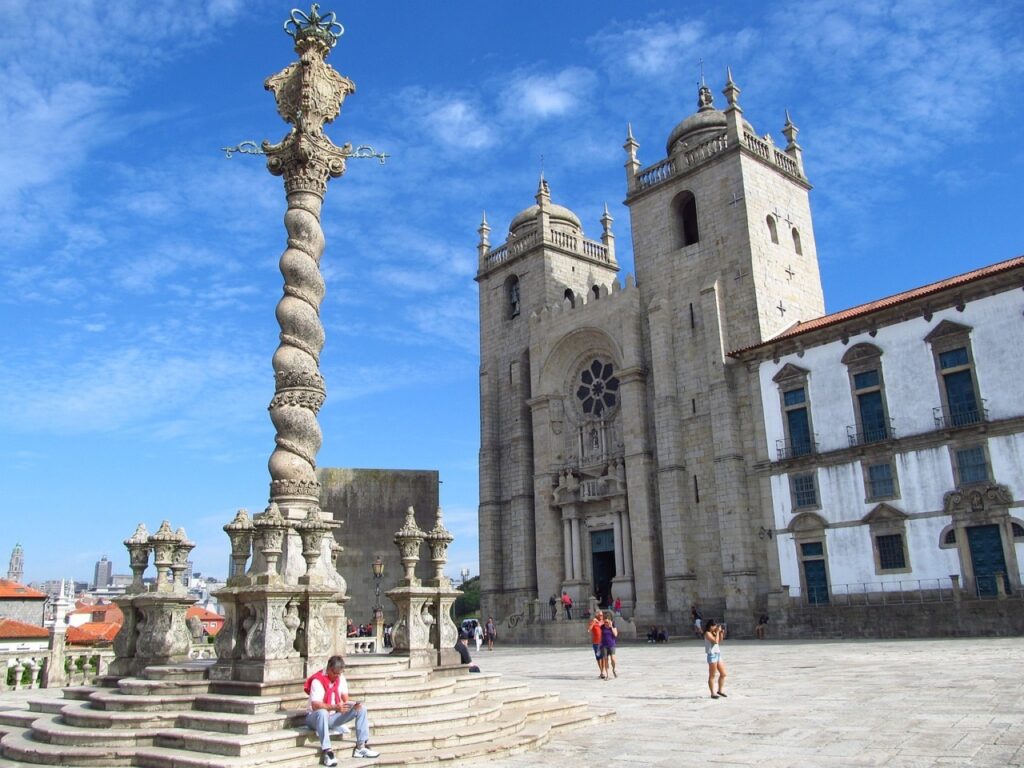
From Praça da Ribeira, a maze of medieval alleys and stairways climbs toward the imposing hilltop fortress of Porto’s cathedral. Originally founded in the 12th century, the cathedral was largely rebuilt in the 13th century and later transformed during the 18th century. Yet, traces of its Romanesque roots remain visible—most notably in the barrel-vaulted nave. Inside, you’ll also find a beautiful rose window and a 14th-century Gothic cloister, echoing the building’s early architectural heritage.
History adds a deep sense of gravitas to the cathedral. It was here, in 1387, that King Dom João I married Philippa of Lancaster, forging a powerful Anglo-Portuguese alliance. Just a few years later, in 1394, their son—Prince Henry the Navigator—was baptised here, long before his maritime ambitions helped launch Portugal’s Age of Discovery.
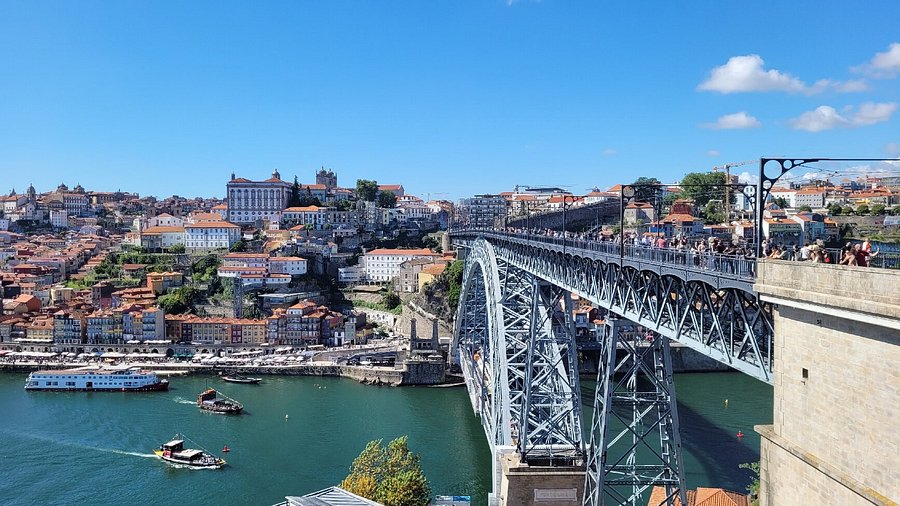
Completed in 1886 by a student of Gustave Eiffel, the Dom Luís I Bridge is one of Porto’s most iconic landmarks. Its soaring double-deck iron arch spans the Rio Douro with dramatic elegance. Today, the upper deck is reserved for pedestrians and one of the city’s metro lines, while the lower deck carries road traffic and offers narrow walkways for foot traffic. The views from either level—of the river, the old town, and the Vila Nova de Gaia wine cellars—are breathtaking. So too are the fearless daredevils who occasionally dive into the Douro from the lower level.
The bridge’s construction marked a major improvement in crossing the river. Before it existed, people navigated the Douro on a precarious bridge made of old port boats lashed together. With no upstream dams to tame the river’s currents, crossing was often risky. A tragic moment in its history came in 1809, when Napoleon’s forces invaded: a panicked crowd fleeing across the unstable bridge was caught in a deadly crush, with many drowned in the surging waters.

Housed in the imposing neoclassical Palácio das Carrancas, Porto’s premier art museum showcases an impressive collection spanning from Neolithic carvings to modernist works. The palace itself has a rich history—briefly requisitioned by Napoleonic forces, it was abandoned so abruptly that the future Duke of Wellington is said to have discovered an unfinished banquet still laid out in the dining room.
Since its transformation into the Museu Nacional de Soares dos Reis in 1940, the museum has focused on fine and decorative arts, with its most notable pieces dating to the 19th century. Highlights include powerful sculptures by António Teixeira Lopes and António Soares dos Reis—especially his poignant masterpiece O Desterrado (The Exiled). Also of note are the naturalistic paintings by Henrique Pousão and António Silva Porto, representing Portugal’s unique take on European modernism.

This magnificent neoclassical monument, constructed between 1842 and 1910, was built to honour Porto’s past and present merchants. Just inside the entrance lies the Pátio das Nações (Hall of Nations), a glass-domed atrium where the city’s stock exchange once operated. But the real treasures lie deeper within the palace, accessible only on a guided tour (offered every 30 minutes and lasting about half an hour).
The showstopper is the Salão Árabe (Arabian Hall), a breathtaking ballroom inspired by Moorish architecture. Its intricately carved stucco walls, lavishly gilded with around 18 kilograms of gold, make it one of the most dazzling interiors in Portugal.
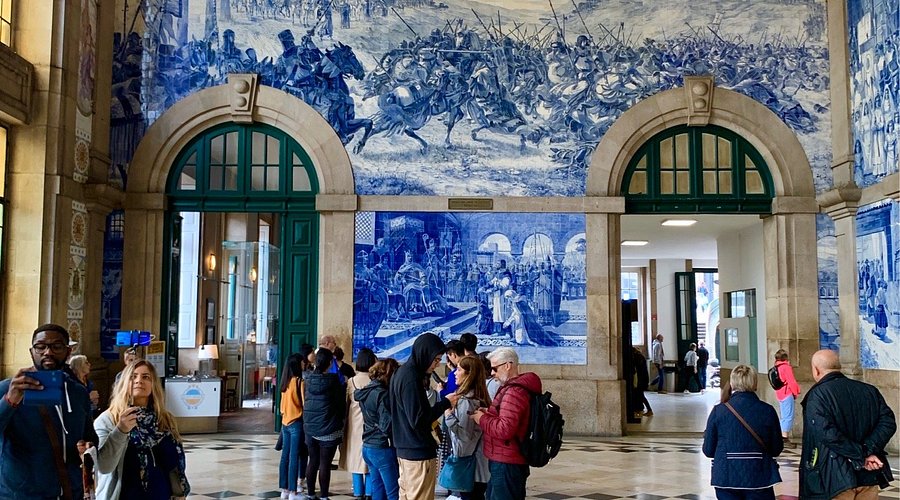
Often hailed as one of the world’s most beautiful train stations, São Bento transports visitors not just across Portugal, but back to a more elegant era of rail travel. Completed in 1903, its Beaux-Arts design—topped with a mansard roof—feels like it was plucked straight from 19th-century Paris.
But the true marvel lies inside. The station’s grand entrance hall is adorned with around 20,000 azulejos (painted ceramic tiles), designed by artist Jorge Colaço and completed in 1930. These vivid blue-and-white panels depict key moments in Portuguese history, including Henry the Navigator’s conquest of Ceuta, alongside scenes illustrating the evolution of transport. The result is a spectacular fusion of art, history, and architecture—an unforgettable welcome to Porto.
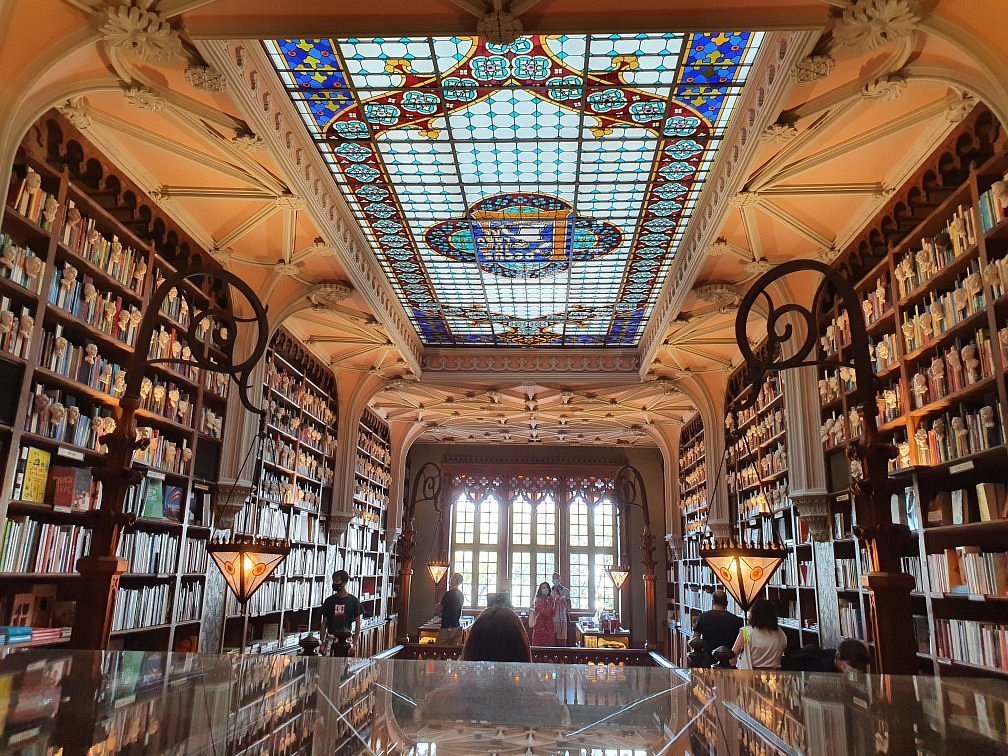
Ostensibly a bookshop, but truly a work of art, Livraria Lello is a must-see—even if you’re not shopping for books. Opened in 1906, this neo-Gothic gem enchants visitors with its lavishly carved plasterwork (cleverly painted to resemble rich wood), stained-glass skylight, and whimsical, red-carpeted staircase that seems to defy gravity.
The magical interior has long stirred the imagination—legend has it that JK Rowling, who lived in Porto while working as an English teacher from 1991 to 1993, drew inspiration from the staircase for the one at Hogwarts in the Harry Potter series.
Entry costs €5, which can be redeemed against the purchase of a book.
WhatsApp us